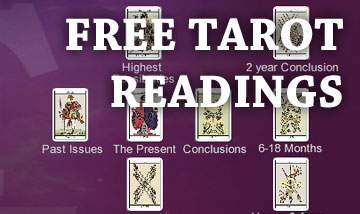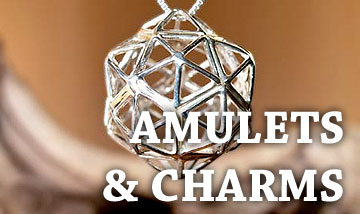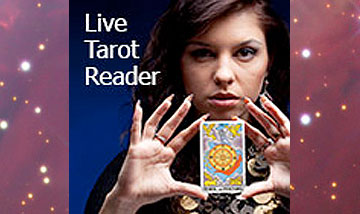Hope Diamond
Hope Diamond : is described as being "torn from the brow of a
temple god and cut into the world's most valuable gem, the Hope Diamond
bewitched kings and was at the heart of the French Revolution.
But it also brought tragedy and death to those who owned it.."
The Hope Diamond is believed to have come from the Kollur mine near
Golconda in India. It first
came to attention in the 1660's when a French explorer Tavernier noticed
the then 112 carats of golf ball shaped blue stone, gleaming on the
forehead of a temple idol. At
that point in time it was roughly three times the size that it is today. Tavernier took the diamond back to France where in 1669 he
sold it to Louis XIV for the modern day equivalent of �71 million.
Four years after making his purchase, Louis XIV better known as the Sun
King because of the magnificence he sought to project had the diamond
re-cut. Now after losing some
of it's original weight the Hope diamond was now a beautiful heart shape
of 67 carats. It's fame as
a beautiful piece soon grew throughout Europe, where it became known
simply as the "French Blue".
However it was not long before an aura of malevolence began to glow around
the diamond, albeit slowly at first. Initially Louis XIV lent the diamond to his mistress, Madame
de Montespan, who was immediately replaced by her rival Madame de
Maintenon (her children's governess and later wife to Louis).
Shortly after this, one by one of those persons close to Louis
began to die. These included:
his son, brother, his grandson, and his grandson's wife.
In September 1715, his great-grandson Louis XV succeeded Louis.
He duly inherited the Hope diamond that he had mounted on the
insignia of the Golden Fleece order of chivalry that he often wore.
So too did his ill-fated grandson Louis XVI when he succeeded to
the throne in 1774. He also
went on to lend the diamond to Marie Antoinette.
Unfortunately both their lives ended in a 'welter of blood and
violence'. The royal family were guillotined in 1793, bringing to a
violent all those so far who had had the misfortune to wear the Hope
Diamond.
The new government that replaced the monarchy ordered the monarchy's
jewels to be brought from Versailles to Paris.
However records show that two gangs of robbers led by the thief
Paul Miette, 35, cut a hole in a window where the diamond was kept and
duly stole the Sun King's collection of diamonds.
Miette tool the white gems leaving the "French Blue" to the
other gang. Strangely enough
the thieves returned to the scene to procure some diamonds they could not
carry from the night before. However the noise of their bickering over their spoils
alerted the authorities, that duly captured and beheaded many of them
whilst recovering some of the gems. The
"French Blue" was not among them.
As the diamond was so well known it was impossible to sell in
it's present form so it was believed to have been re-cut in Amsterdam.
It wasn't until 1812 that a marvelous blue diamond appeared in
London, owned by a diamond merchant named Eliason.
It was valued then at �30,000 or �789,000 in today's money. From here Henry Philip Hope bought it in 1830, he came from a
family of bankers. It was
from this point that the diamond became known as the Hope Diamond.
The diamond then passed from Hope who never married to one of his
three nephews Henry who bought it from his uncle's estate.
Henry then lent the diamond to be shown at the Great Exhibition in
Hyde Park. Now a diamond of
only 47 carats; experts seven years later managed to verify that the
diamond was in fact originally from the Sun King's collection.
Sadly Henry was only 54 when he died but he left the diamond to his
daughter Henrietta who married Henry Pelham-Clinton, heir to the fifth
Duke of Newcastle. From here
the diamond passed to her grandson Lord Henry Pelham-Clinton.
Unfortunately because of pressing financial problems he had to sell
the diamond on to a Hatton Garden dealer for the sum of �33,000 or �1.8m
in today's money. The whole
affair had upset him so much that no one was ever allowed to speak of the
diamond in his presence. The
diamond's next owner called Colot went mad and committed suicide after
selling the diamond to the Russian Aristocrat called Prince Ivan
Kanitovski. Shortly after
shooting his mistress he was himself stabbed a few days later.
This added once again another chapter and three more deaths to the
violent history of the Hope diamond.
After the death of the Prince Abdul the damned also known as Abdul
Hamid II - the Sultan of Turkey, acquired the diamond.
He like many of the diamond's previous owners met an untimely
death in 1909, by the Young Turk Revolution.
This was not before he had managed to shoot his wife, the Sultana
Salma Zobeida while she was wearing it!
The next owner a jewel merchant named Habib drowned within weeks of
purchasing the diamond. This
occurred when the French liner La Seyne sank in the Rio straits 40 miles
from Singapore. Pierre
Cartier owned the diamond next, but it is not known how much he paid for
it. Luckily for him he was
one of the few to own it and not end up dead!
The daughter of Thomas Walsh a gold mining mogul who made his fortune in
Colorado, was next in line to own the diamond.
Evalyn Walsh married Edward McLean someone almost as rich as her
father. He was a newspaper
heir and in 1910 shortly after the birth of their first child Pierre
Cartier showed them the Hope Diamond while they visited Paris.
Evalyn was initially unimpressed by the setting of the diamond.
However Cartier re-set it and along with it's documents allowed
Evalyn to keep it for a weekend. After
the weekend she bought it in 1911, well aware of it's history for the
princely sum of $180,000 or �5m in today's money.
Even though Evalyn had the diamond blessed by a priest her life
still had it's share of tragedy. Her
brother died at an early age. Her
elder son, whose birth was celebrated by the purchase of the Hope diamond,
was killed in a car accident when he was just nine years old.
This led to her husband drinking heavily and the marriage ending in
divorce. More unfortunately was to follow, her daughter died in 1946,
killed by an overdose at the tender age of 25.
The very next year Evalyn herself died of pneumonia.
The New York jeweler Harry Winston bought all 74 pieces of
Evelyn's jewelery for $1.5m. Nine
years he presented the Hope diamond to the National Museum of Natural
History in Washington DC. It
was sent by recorded delivery. Even
the postman who delivered it failed to escape its influence.
James' Todd firstly had his leg crushed by a lorry, lost his
wife, then fell from a car, after which his dog strangled itself on its
own lead.
Today the Hope diamond and its 74 facets, polished and buffed, gleam from
a platinum setting in a beige marble display case.
It affords at least the same amount of security as the British
Crown Jewels. Interestingly,
in 1965, the diamond firm De Beers discovered that the Hope diamond could
be made to glow for several minutes like a red-hot coal, on exposure to
ultra-violet light. Not only
does no one know why this occurs, the head of Mineral Sciences at
Smithsonian is quoted as saying, "Nothing like this has been known to
happen with any other diamond".
Today some experts believe the diamond to be worth around �215m although
with such a chequered history it remains to be seen who might dare to be
the next to own it.
Source: Information and inspiration for this article taken
from an article called - The Hope Diamond - by Anne de Courcy
which appeared in the Daily Mail, Saturday December 15th, 2001.
Recommended Reading
Matthew Hart - The History of a Cold Blooded Love Affair
- 4th Estate
For further information, tel: (0870) 161 0870
 DISCOVER TAROT ON iPHONE, iPAD AND ANDROID.
DISCOVER TAROT ON iPHONE, iPAD AND ANDROID.
Learn Tarot Card Meanings, what they mean when combined in a reading, test your knowledge in the Tarot Quiz and reveal what the future may hold with the Tarot Reading App.





